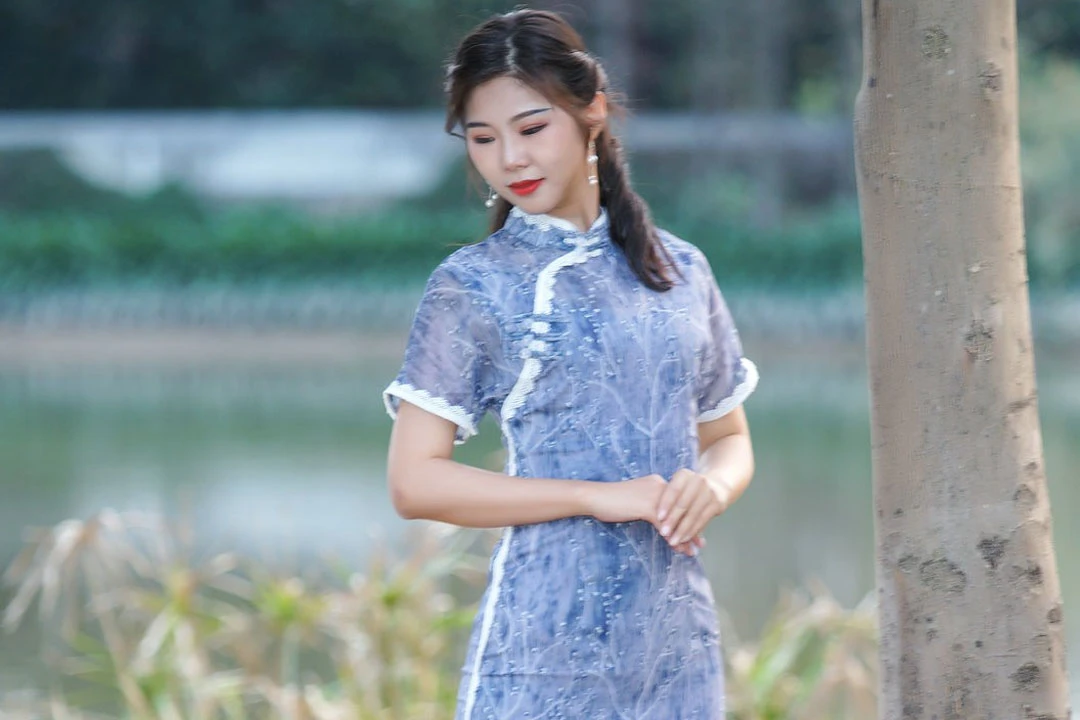In the rich tapestry of global fashion, the Qipao and Kimono stand as iconic representations of Chinese and Japanese cultural elegance. This exploration seeks to unravel the intricacies of these two garments, delving into their historical roots, design aesthetics, and the cultural contexts that have shaped their distinctive identities.
1. Origins and Evolution
The story of the Qipao and Kimono begins with the deep roots of Chinese and Japanese traditional attire. The Qipao, with its origins in the Manchu-ruled Qing Dynasty, underwent significant transformations during the turbulent periods of Chinese history. In contrast, the Kimono, rooted in the Heian period of Japan, reflects the enduring traditions of Japanese culture. The evolution of these garments is intertwined with the socio-cultural shifts in their respective countries, resulting in unique and recognizable styles.
While the cheongsam adapted to reflect the changing landscape of China, the Kimono maintained a more conservative and timeless aesthetic, preserving its classical elegance through the centuries.
2. The Design of Qipao and Kimono
The design elements of the cheongsam and Kimono serve as visual expressions of cultural identity. The Qipao, known for its form-fitting silhouette, high collar, and slits, accentuates the female figure with elegance and sophistication. Traditional Qipao designs often incorporate vibrant colors, intricate embroidery, and meaningful motifs, reflecting the wearer’s status, personality, or the occasion.
On the other hand, the Kimono embraces a more relaxed and flowing silhouette. The wide sleeves and ample fabric provide a canvas for intricate patterns, often inspired by nature, seasons, or family crests. The Kimono’s design is a harmonious blend of simplicity and complexity, creating a garment that exudes timeless grace.
3. The Classic Styles
The Qipao’s form-fitting silhouette emphasizes the natural curves of the body, creating a sense of grace and allure. The garment is often associated with femininity, capturing the essence of sophistication and charm. In contrast, the Kimono’s loose and flowing style symbolizes modesty and grace. The wearer’s movements are accentuated by the voluminous sleeves and the gentle swaying of the fabric, evoking a sense of tranquility and beauty.
The choice of style in each garment reflects the cultural values and perceptions of beauty in their respective societies.
4. Cultural Significance
Both the Qipao and Kimono are deeply intertwined with cultural traditions and carry significant symbolism. The cheongsam is commonly worn during formal occasions such as weddings, banquets, and important ceremonies. The choice of color, fabric, and design can convey messages about the wearer’s cultural background, status, or the nature of the event.
In Japan, the Kimono is reserved for special occasions like weddings, tea ceremonies, and traditional festivals. The symbolism embedded in Kimono patterns often reflects the wearer’s age, marital status, or the season. Both garments serve as living canvases that narrate cultural stories with every stitch.
5. Qipao and Kimono in Modern Times
In the contemporary fashion landscape, both the cheongsam and Kimono have transcended their traditional roles. Designers globally have embraced these iconic garments, infusing them with modern interpretations and adapting them to suit diverse tastes. The Qipao, with its versatility, has found a place in global fashion events, red carpets, and international runways. Likewise, the Kimono has been embraced by fashion enthusiasts worldwide, appreciated for its timeless elegance and artistic designs.
Contemporary adaptations pay homage to the cultural heritage of these garments while allowing them to evolve in response to changing fashion trends.
6. Global Impact: Cheongsam vs Kimono
The allure of the Qipao and Kimono extends beyond their cultural origins. These garments have become symbols of elegance on the global stage, worn and appreciated by individuals worldwide. Influencers, celebrities, and designers from various cultures have embraced the cheongsam and Kimono, contributing to their continued popularity beyond Chinese and Japanese borders.
The global impact of these garments underscores their universal appeal, transcending cultural boundaries and fostering an appreciation for the beauty and craftsmanship embedded in their designs.
In conclusion, the Qipao and Kimono, while rooted in distinct cultural traditions, share common threads of elegance and artistry. Their differences in design, style, and cultural significance showcase the unique identities of Chinese and Japanese fashion. As symbols of cultural pride and timeless beauty, the Qipao and Kimono continue to weave a rich tapestry that transcends borders, inviting the world to appreciate the legacy and craftsmanship of these iconic garments.


